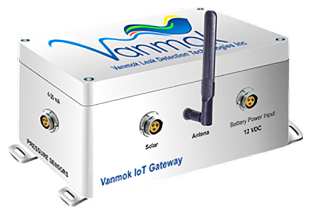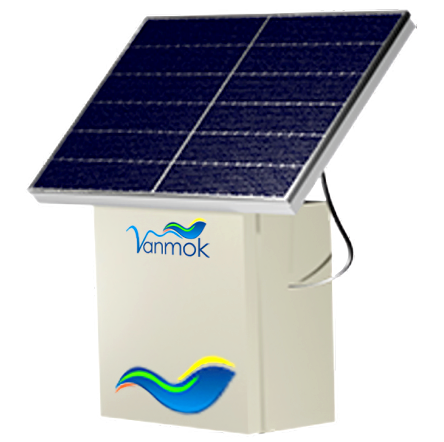In an era marked by rapid technological advancements, adapting to change is essential for the oil and gas industry to thrive. With increasing pressure to optimize pipeline safety and reduce environmental disruption, leveraging IoT (Internet of Things) and edge computing in conjunction with cloud-based leak detection technology is crucial to staying competitive. Integrating these cutting-edge technologies not only ensures improved pipeline detection and safety but also has significant implications for operational efficiency and resource management.
As a forerunner in cloud-based leak detection, we are dedicated to integrating IoT and edge computing technologies into our state-of-the-art solutions for unparalleled performance and accuracy. By harnessing the real-time data processing capabilities of IoT devices and the local data storage and computation capacity of edge computing, our cloud-based leak detection technology maximizes efficiency and minimizes downtime while consistently delivering true positive alarms.
In this blog post, we will delve into the powerful convergence of IoT and edge computing technologies with cloud-based leak detection systems for the oil and gas sector. We will discuss the benefits and challenges arising from this synergy, examine its potential impact on pipeline safety and efficiency, and explain how this integration is revolutionizing pipeline maintenance and management in remote locations.
Join us as we explore the possibilities unleashed by the innovative marriage of IoT, edge computing, and cloud-based leak detection technologies, ushering in a new era of safety, security, and sustainability for the oil and gas industry.
The Impact of IoT and Edge Computing on Cloud-based Leak Detection Technology
1. Unlocking the Power of IoT Devices in Cloud-based Leak Detection
IoT devices play a crucial role in enhancing cloud-based leak detection through their ability to collect, transmit, and process high volumes of data in real-time. Key benefits of IoT integration in cloud-based leak detection solutions include:
– Advanced data acquisition: IoT devices can gather data from multiple sources, such as flow meters and pressure sensors, to provide a comprehensive view of pipeline health.
– Real-time monitoring: IoT devices facilitate real-time monitoring of pipelines, essential for rapid response and effective leak detection.
– Data transmission reliability: IoT devices can help maintain uninterrupted data transmission, even in remote or challenging environments, ensuring seamless pipeline monitoring and swift leak detection.
2. Improving Operational Efficiency with Edge Computing
Edge computing enables local data processing and storage, accelerating response times, and enhancing pipeline safety. By integrating edge computing into cloud-based leak detection systems, oil and gas operators can achieve the following benefits:
– Reduced latency: Edge computing processes data locally, reducing latency and improving overall system efficiency in detecting and addressing pipeline leaks.
– Network resilience: By processing data closer to the source, edge computing can enhance network resilience, ensuring reliable pipeline monitoring even during periods of network congestion or disruption.
– Enhanced scalability: The local data processing capabilities of edge computing allow for seamless scalability, accommodating the changing needs of today’s dynamic oil and gas operations.
3. Tackling Remote Pipeline Challenges with Integrated Technologies
Oil and gas pipelines often traverse remote and inaccessible locations, posing unique challenges for pipeline monitoring and management. By merging IoT and edge computing capabilities with cloud-based leak detection technology, oil and gas operators can overcome these challenges and achieve the following benefits:
– Reliable data transmission in remote locations: By leveraging both IoT and edge computing, oil and gas operators can ensure that data is collected, processed, and relayed effectively, even in remote locations with limited communication infrastructure.
– Enhanced performance in harsh environments: IoT devices and edge computing technologies can be designed to withstand extreme temperatures, moisture, and other harsh conditions often encountered in remote pipeline settings, ensuring continuous accuracy and reliability.
– Reduced response times and environmental impact: The integration of IoT and edge computing technologies enhances leak detection capabilities, enabling rapid response to pipeline incidents and minimizing environmental risks associated with leaks.
4. Integrating IoT and Edge Computing in an Era of Cybersecurity Concerns\
As modern oil and gas operations increasingly rely on IoT devices and edge computing, addressing cybersecurity concerns becomes paramount. To mitigate potential cyber threats and protect against data breaches, cloud-based leak detection solutions should consider:
– Data encryption: Employing robust data encryption techniques can safeguard sensitive pipeline information while it is stored and transmitted, preventing unauthorized access.
– Regular software updates: Frequent software updates incorporating the latest security measures can help ensure that cloud-based leak detection systems remain protected from emerging cyber threats.
– Multi-layered security protocols: Employing multi-layered security strategies such as firewalls, intrusion detection systems, and secure authentication protocols can help create a robust and resilient security framework.
Embracing a Future Defined by IoT, Edge Computing, and Cloud-based Leak Detection
The integration of IoT and edge computing technologies with cloud-based leak detection solutions is revolutionizing pipeline safety and efficiency in the oil and gas sector. Combining IoT devices’ real-time data processing capabilities with edge computing’s local data storage and computation power unlocks new possibilities for improved monitoring, reduced response times, and enhanced environmental sustainability.
Furthermore, IoT and edge computing integration can deliver significant benefits to oil and gas companies by addressing the unique challenges and constraints of remote pipeline operations, including reliable data transmission in remote locations, enhanced performance in harsh environments, and reduced environmental impact.
As we move towards an increasingly connected and data-driven future, the synergy between IoT, edge computing, and cloud-based leak detection technology promises to play a vital role in shaping the oil and gas industry’s safety, security, and sustainability landscape.
To explore the multitude of opportunities that IoT and edge computing integration can offer within our cloud-based leak detection solutions, reach out to our team of experts at Vanmok today.













